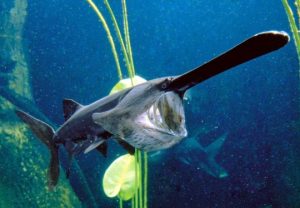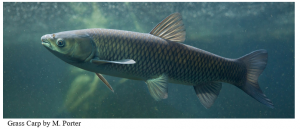
Over recent decades, the adverse effects of dams have given rise to an interest in dam alternatives and removal in the management and conservation community (Hart, 2002). Barriers such as dams may impede and delay organism migration, fragment habitats, alter the natural cycle of flow, and shift species diversity and composition (Hart, 2002). Hydroelectric dams, in particular, have damaged the ecological integrity and have decimated runs of migratory fish in many of the rivers in the Eastern United States (Waldman, 2016).
The Gorge Metro Park Dam was originally constructed in 1913 for hydroelectric power on the Cuyahoga River (“Ohio EPA”, 2015). It served this purpose until 1958 and was then used until 1992 as a source of cooling water for a coal-fired power plant (“Ohio EPA”, 2015). In the 2000s the Ohio Environmental Protection Agency declared this 57-foot-high and 440-foot-wide dam an impairment to aquatic life along the middle and lower segments of the Cuyahoga River both of which have been designated areas of concern by the International Joint Commission (Conn, 2017). The dam has segmented the Cuyahoga River altering its flow and chemistry by essentially creating a nearly 1.5-mile-long “lake” (Conn, 2017). This allows for an unhealthy accumulation of algae which reduces oxygen levels and has the potential to kill fish (Conn, 2017). The dam also acts as a barrier to a variety of migratory fish such as suckers and noninvasive native lampreys (Conn, 2017).
Recent studies have raised concerns over the impacts of obstructions of the demography of many lamprey species (Nunn et al., 2017). Lampreys tend to face a variety of threats throughout their life cycles such as pollution, habitat degradation, predation, and barriers to migration (Nunn et al., 2017). Obstructions such as dams prevent lampreys from reaching spawning grounds and often result in delayed spawning or reduced spawning success due to a large amount of energy expended to overcome the obstacles (Nunn et al., 2017). This could possibly result in low densities and missing age classes in suitable habitat (Nunn et al., 2017).
There is also a common misconception that suckers are tolerant to degraded conditions (Cooke et al., 2005). However, recent studies say otherwise. The decline in some species is a result of lack of conservation, loss of habitat, and competition. In addition, stream alteration due to dams and blockage of migration routes are key factors (Cooke et al., 2005). Catostomid offspring develop upstream and may not be able to reach far enough downstream where suitable habitat and food is available (Cooke et al., 2005). In addition, many sucker species are sensitive to river discharge and water velocity which may be irregular due to the presence of dams (Cooke et al., 2005).
As a result, to these concerns, the Ohio Environmental Protection Agency and Cuyahoga Falls Mayor Don Walters are working with local, state, and federal agencies to facilitate a plan for the removal of the Gorge Metro Park Dam in 2019 (McGraw, 2017). This will ironically coincide with the 50th Anniversary of the 1969 fire (McGraw, 2017). It is estimated to cost about $70 million dollars for removal and cleanup; most of which will be put towards sediment removal (McGraw, 2017). This is a key component as approximately 832,000 cubic yards of sediment lies under the dam containing arsenic, mercury, and other harmful hydrocarbons that must be safely removed in order to prevent further harm (Downing, 2015). If the current plans are feasible, not only will the removal of the dam yield a better environment for fish and healthier water by allowing the river to resume its natural filtering process and flow; but it will also create a safer and healthier community for eco-tourism and environmental education (Conn, 2017).
Sources:
Conn, J. (2017, April 19). Gorge Dam removal pushing ahead, despite threats to Great Lakes Restoration funds. Retrieved September 27, 2017, fromhttp://www.cleveland.com/akron/index.ssf/2017/03/officials_still_looking_to_tak.html
Cooke, S. J., Bunt, C. M., Hamilton, S. J., Jennings, C. A., Pearson, M. P., Cooperman, M. S., & Markle, D. F. (2005). Threats, conservation strategies, and prognosis for suckers (Catostomidae) in North America: insights from regional case studies of a diverse family of non-game fishes. Biological Conservation,121(3), 317-331. doi:10.1016/j.biocon.2004.05.015
Downing, B. (2015, September 24). Removing Gorge Dam on Cuyahoga River between Akron and Cuyahoga Falls could cost about $70 million. Retrieved September 27, 2017, from https://www.ohio.com/akron/news/removing-gorge-dam-on-cuyahoga-river-between-akron-and-cuyahoga-falls-could-cost-about-70-million
Hart, D. D., Johnson, T. E., Bushaw-Newton, K. L., Horowitz, R. J., Bednarek, A. T., Charles, D. F., Velinsky, D. J. (2002). The Challenges of Dam Removal and River Restoration. Bioscience,52 (8), 669-681. doi:10.1130/9780813741215
McGraw, D. J. (2017, March 27). America’s Great Dam Teardown Means Cleaner Water, More Parkland. Retrieved September 27, 2017, from https://nextcity.org/features/view/dam-removal-cuyahoga-ohio-epa-funding-restore-watersheds
Nunn, A. D., Taylor, R. J., Cowx, I. G., Noble, R. A., Bolland, J. D., & Harvey, J. P. (2017). Demography of sea lamprey (Petromyzon marinus) ammocoete populations in relation to potential spawning-migration obstructions. Aquatic Conservation: Marine and Freshwater Ecosystems,27(4), 764-772. doi:10.1002/aqc.2748
Ohio EPA. (2015, September 21). Feasibility Study for the Removal of the Gorge Dam.
Waldman, J. (2016, August 6). Undamming Rivers: A Chance For New Clean Energy Source. Retrieved September 27, 2017, from http://e360.yale.edu/features/undamming_rivers_a_chance_for_new_clean_energy_source
Image was taken by: Taylor Hrabak






























